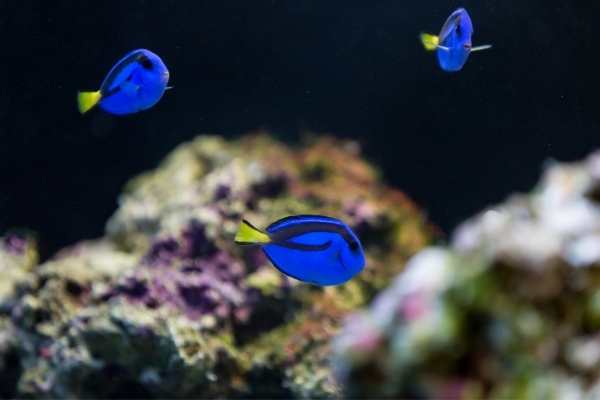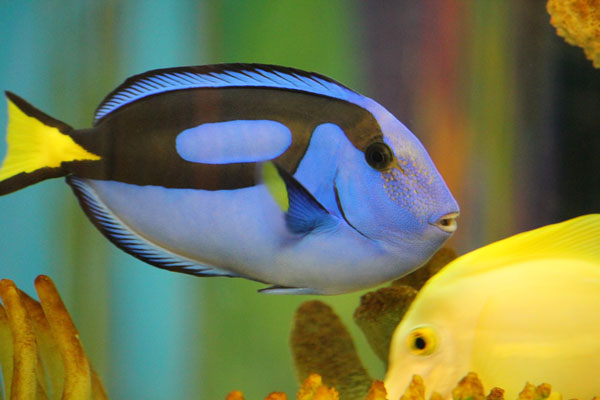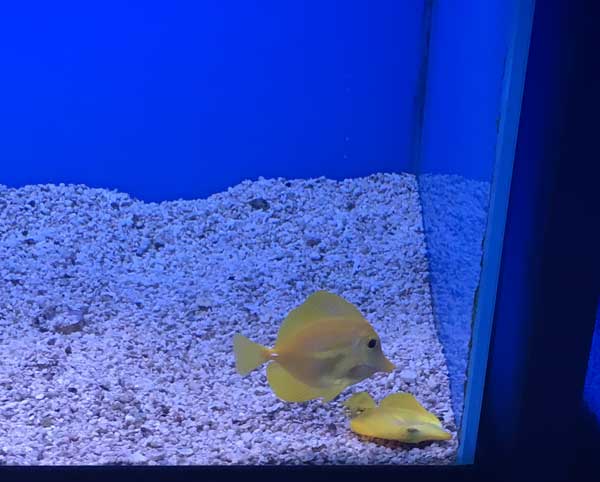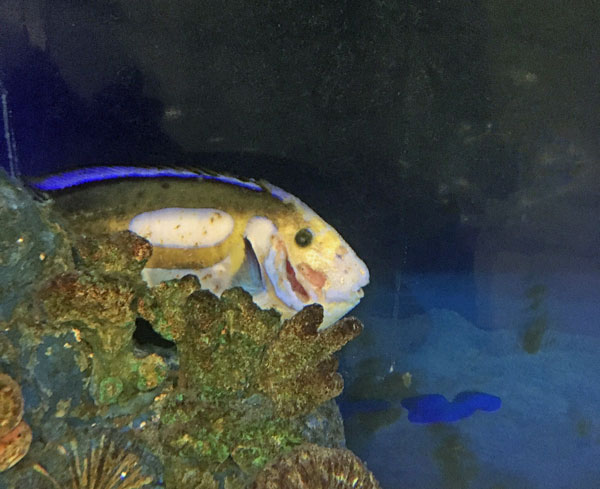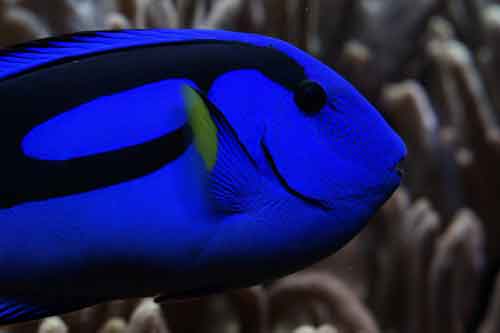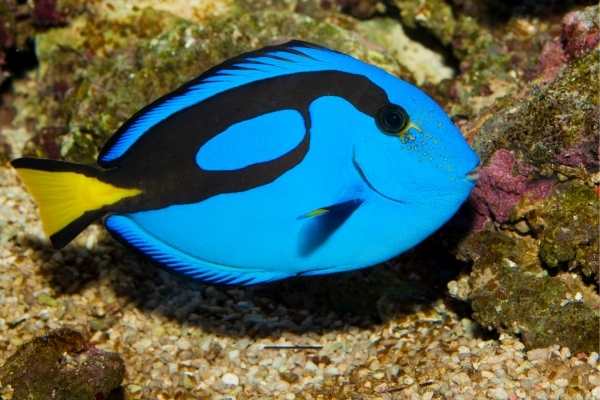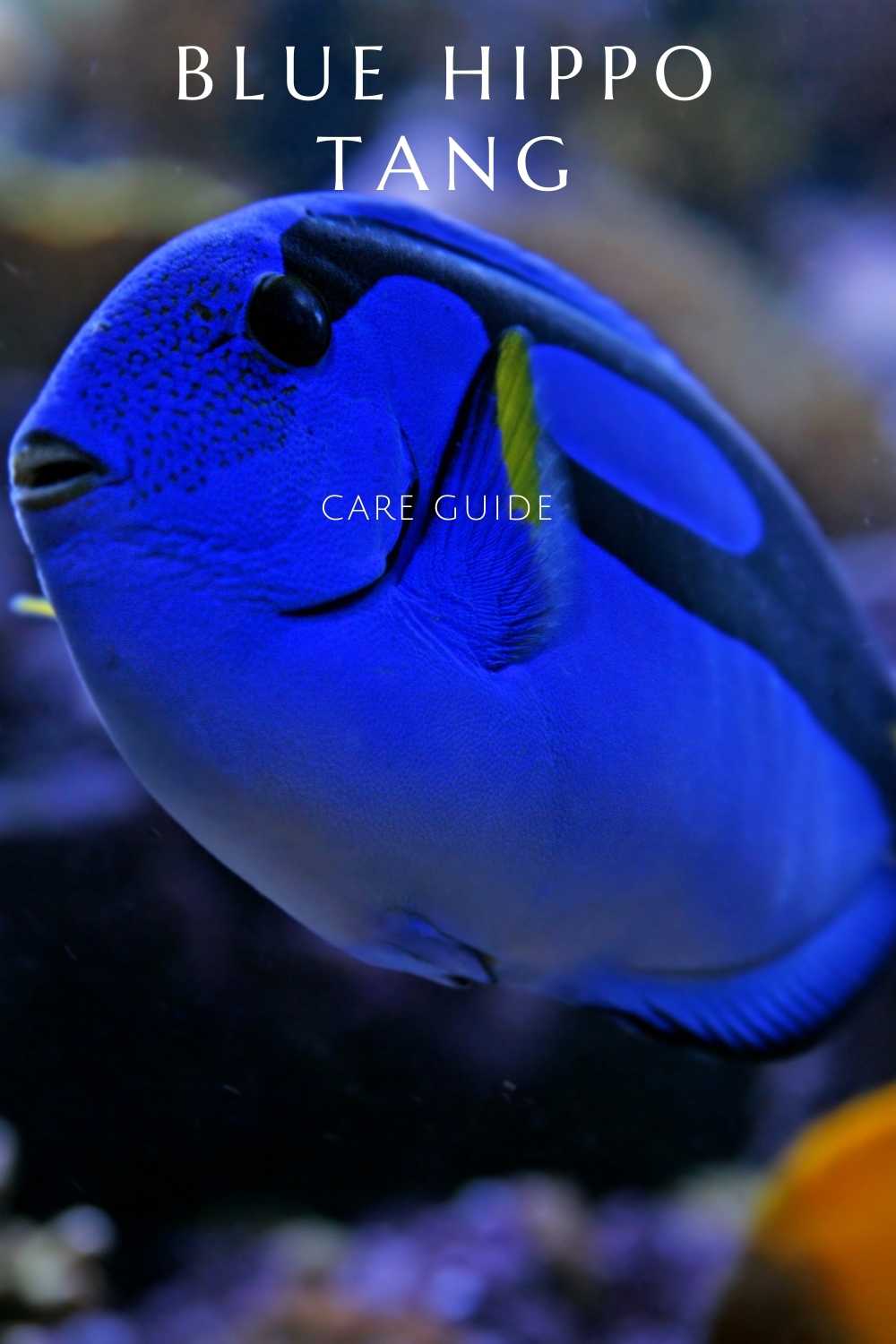[ad_1]
The Blue hippo tang is an undoubtedly interesting and popular saltwater fish that ranks, in my mind, as one of the most beautiful. Is it the cool electric blue body, the yellow tailfin, the bold black markings, the freckles on the face, or the Pixar movies?
Yes, yes, yes, yes and (I’ll admit it) yes. This article will dive into the best advice to care for the Blue hippo tang in a reef tank to help make sure you don’t find a sad, sick Dory in your tank one day.
Table of contents
- Quick Facts
- Blue hippo tang care
- Hiding
- Playing dead
- Reef safe
- Compatibility
- Feeding
- Quarantine
- Common names
- Watch this video for more information
- What to read next
- Conclusions
Quick facts
- Scientific name: Paracanthurus hepatus
- Common names: Blue Hippo Tang, Regal Tang, Pacific Blue Tang, Hepatus Tang, Flagtail or Pallette Surgeonfish
- Size of fish: 12-inches as an adult
- Minimum tank size: 100 gallons ++ (some say 180!)
- Reef safe: Yes, reef safe
- Care level: Moderate
- Diet: Herbivorous, needs algae in diet to be healthy
- Aggression: Semi-aggressive
Caring for the blue hippo tang
Often sold as tiny, 1-inch juvenile fish, to an unsuspecting fish tank owner whose children recently watched Finding Nemo or Dory, the adult blue hippo tang might look like a tiny, fish-nugget-sized fish, but it can grow up to be 12-inches in length.
In addition to the fairly large adult-size, the Blue Hippo Tang, like all of the tangs, is a shoaling, active swimmer. On a real reef, you would see them zipping along the rocks and corals, nipping algae from the rocks. It’s tough to recreate that amount of space in the home aquarium.
Because of these compounding factors, many of the passionate tang lovers will advocate for tanks in excess of 180 gallons. At the risk of stating the obvious, here, that makes caring for this amazing fish unapproachable for the average saltwater fish tank owner. My gut says that if you’re an experienced aquarist, you could potentially care for them in a somewhat smaller aquarium over 100 gallons….but I know many people have strong opinions that would be too small.
As long as you don’t have other tangs in your tank, you will likely find your regal tang to be mild-mannered, or even sometimes skittish and afraid of its own shadow.
Hiding
A frightened tang will hide behind or wedge itself into your rockwork, so make sure your coral frags are firmly glued on. When acclimating a new fish to your tank, consider dampening your lights and try to avoid rapid, imposing motions in front of the tank, to avoid sending your new gem deep into the aquascape.
Playing dead
It is reported that they will actually play dead, sometimes, to avoid predators, which is something I must see before I die. I just added it to my bucket list.
Compatibility
Although the blue hippo tang is generally peaceful to other saltwater fish, they are territorial, like all tangs, and are best kept as a single tang specimen. I was putting that delicately. Put another way, if you have more than one tang in the same tank, there is a good chance they will fight until one of them is dead. I’ve seen that happen in a local fish store between two yellow tangs (also awesome fish).
I don’t think that tang was playing dead :(. I hope you don’t need a picture of fighting between two P. hepatus to make this point and you’ll take my word on precaution.
By nature, these are shoaling fish, so it is possible to have a shoal of tangs in a tank with a few hundred gallons of swimming volume…for this humble hobbyist, I will try to send my children to college before I take on that expense—I suspect it comes out pretty close to a wash, there.
Care and Feeding
As already noted, the blue tang requires a very large tank (180 gallons or more) in order to provide it with plenty of swimming room.

Note the rounded belly and full body shape of this well-fed Regal tang
It is probably “best” if you have plenty of live rock to graze on and hide in between or among. Regular feedings of nori or other seaweed are recommended for best health, although it is likely that this fish will gladly accept meaty offerings, opportunistically.
In addition to nori, I like to feed my tangs Spirulina flakes. I’ve written about them before. Here’s the kind I buy, if you’re interested (affiliate links)
Diseases and Infection
Unfortunately, while this amazing saltwater aquarium fish is wildly popular, the Regal tang is also prone to having some trouble with infections and disease in a reef tank.

Note the saltwater ich (top left), Head and Lateral Line Erosion-HLLE (top right), and Starvation (bottom
The species is generally prone to certain protozoan diseases, such as velvet and marine ich. Immunity, their immune systems, and exposure to the parasites drive whether or not they succumb to the protozoan infections. Diet is also thought to one factor that affects their immune system, so the advice that is generally given (and is given on sites like LiveAquaria) is to ensure adequate feedings of seaweed diets.
I’ve also seen some pretty terrible cases of Head and Lateral Line Erosion (HLLE), in these fish–which is generally thought to be an environmental disease–meaning it’s the conditions of the water/aquarium (and a compromised immune system) that is causing the issue. HLLE has also been associated with activated carbon use. The ‘fines’ (small charcoal dust) can apparently upset their skin and lateral lines.
This poor, sick fella was at a business in New Jersey. Please don’t let this happen to your blue hippo tang–or any fish. If you see anything like this, please ask someone for help.
Quarantine
I recommend you quarantine everything before you add it to your tank, but at the risk of being redundant here, I’ll reiterate that you should quarantine everything before you add it to your tank. Oh, that’s not just redundant, I repeated myself :).
Names
I think Shakespeare is credited with the saying: “a rose by any other name would still smell the same.” I’m not sure these fish smell any differently, but they sure do go by a lot of different names. The Blue Hippo Tang is also known as Regal Tang, Palette Surgeonfish, Pacific Blue Tang, Hepatus Tang, Flagtail Surgeonfish, Pacific Regal Blue Tang, and more.
Of course, the Latin name is Paracanthurus hepatus. Only a taxonomist could argue with that.
Conclusions
The blue hippo tang is an awesome fish. It’s practically a movie star. It isn’t that hard to care for. They require algae-based diets and clean water. The biggest challenge is that they grow pretty large and need lots of room to swim.
Do you have a tank big enough to keep this beauty?
Watch this video
[ad_2]
Source link

